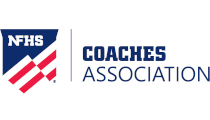It’s often said that preparation is the key to success. It’s safe to say that motto, if you will, has many applications in life – perhaps none more important in athletics than an Emergency Action Plan (EAP). If you have spent any amount of time among the coaching or administration ranks in athletics, you’ve probably been briefed on emergency planning. Much like coaching, it is critical that everyone knows where and how they fit into their respective EAP and are familiar with how to carry out their specific role(s). Just like conducting a required school fire drill, planning and practicing the implementation of your EAP will significantly increase the likelihood of success if and when the time comes to deploy your emergency plan.
An EAP, in essence, breaks down into three basic parts at its core: Roles, Equipment/Information needed, and Planning/Preparation. When all of these aspects are addressed, there is a greater chance you will be prepared for an emergency and, much more importantly, you will be able to provide your athletes with the safest environment to achieve their athletic potential.
Roles
The basic roles within an EAP are applicable to all athletic events and athletic venues. Those roles are:
- First responder – assess scene and affected individual(s), provide instructions and care.
- EMS/911 activation – this person should ALWAYS have a working cell phone and should know the address of the venue and be able to provide detailed directions.
- Person in charge of emergency medical forms: this person notifies emergency contact.
- Individual to meet EMS and direct them to the scene: this can be same person that places EMS call but ideally is another member of the EAP team.
- Individual to notify administration or proper chain of command.
- Person in charge of having emergency equipment on site and retrieving it: this person should routinely check the condition and expiration dates of applicable items.
- Member of EAP team to be transported with injured athlete(s) to ER if necessary.
- Person to handle crowd control: keep unnecessary people away from the scene.
- Individual to record the incident by way of an incident/injury report.
Each member of the EAP team must know and understand their role. If you have a role in carrying out the EAP, it is crucial that you are prepared to act each and every day – practice, film session, meeting or contest. It seems as though emergency situations happen when we least expect them. Be prepared!
Equipment/Information
Obviously, the equipment needed can differ for each sport or venue. So, it is necessary to do some research as to what would be needed in your particular setting. A few items that should always be on hand:
- Medical or first-aid kit
- Emergency Medical Forms
- AED (scissors, razor, nitrile gloves, towel, CPR pocket mask in the carrying case)
- Cell phone and backup cell phone
- List of applicable emergency contact phone numbers
- Copy of the EAP
It is helpful to provide everyone who has a role in the EAP with a copy of the actual plan. Review it weekly and be familiar with your role and the entire plan. If you have a large enough staff, you can break down who is responsible for which piece of emergency equipment items. If you don’t have the luxury of a large staff, assign one individual to secure all items. Everyone on the staff should know the location of the emergency equipment and that location should never change. To that effect, the roles, once assigned, should never change either.
Planning/Preparation
Perhaps the most important part of the EAP is planning for the emergency and having the preparation ahead of time to deal with it efficiently. If you are a coach, it is more than likely that you have gone through CPR and First Aid training and some type of concussion education. This may likely have included an introductory-level sports medicine course. If that doesn’t apply to you, then it’s imperative that you address those areas of training. In a perfect world, we would be responsible for only our EAP role; however, we all know that things don’t always go according to plan. Be familiar with all roles and responsibilities and be PREPARED to do whatever is necessary to provide the proper care in the event of an emergency.
Each coach is urged to practice your Emergency Action Plan with your entire staff at least twice per season. It should not be a “planned” practice so as to simulate a real emergency. Upon completion of that practice session, meet as a staff and grade your implementation of the plan. Identify strengths and weaknesses. It is also suggested that you set-up a “meet and greet” with the emergency response team in your area. Bring them out to your facilities so they are familiar with you and the venues they may be called to.
When operating your practice and/or event at an outdoor or off-site venue, the same principles apply in regards to emergency protocol. With out-of-building sites, it is even more imperative that everyone know their respective role and be prepared to act quickly. The importance of having all emergency equipment “on hand” becomes greater, especially a working cell phone, CPR/AED equipment and emergency contact information. When practicing/performing outdoors and off-site, it is likely that the availability of qualified staff will be diminished. Therefore, it is essential that each member of the EAP know their responsibility and be prepared to perform appropriately at a moment’s notice.
Inclement weather becomes an issue with outdoor venues as well. You must be prepared to encounter heat illness and lightning strikes, as well as many other situations that Mother Nature can present. At an outdoor venue, someone should be assigned to watch for lightning and make a determination when the event should be postponed due to close proximity of the strikes; typically 3-10 miles is the “danger zone.” Watching for lightning can be a collective effort, but one individual should always be in charge of making the call. This can be done via the clap-to-bang protocol, a lightning detector (various models available), the eye test or even weather applications for your cell phone. Whenever lightning is visible the practice/competition should be stopped and all individuals moved to a pre-determined safe area.
Always remember to be calm in the face of emergency; this makes all the difference to an injured athlete who is scared and nervous. Emergency situations are unpredictable, but our reaction to them should not be. Be prepared!
Adam Milligan, MS, LAT, ATC
Adam Milligan is the head athletic trainer at Lake High School in Uniontown, Ohio.
Most Recent Articles
- nfhs news NFHS Learning Center Delivers 25 Millionth Course
- Track & Field/Cross Country article Effective Communication with Athletes and Coaches
- nfhs news Player Equipment Changes Highlight 2025 High School Football Rules Revisions
- Player Equipment Changes Highlight 2025 High School Football Rules Revisions
- nfhs news Judgment Call on Second Contact Eliminated in High School Volleyball






